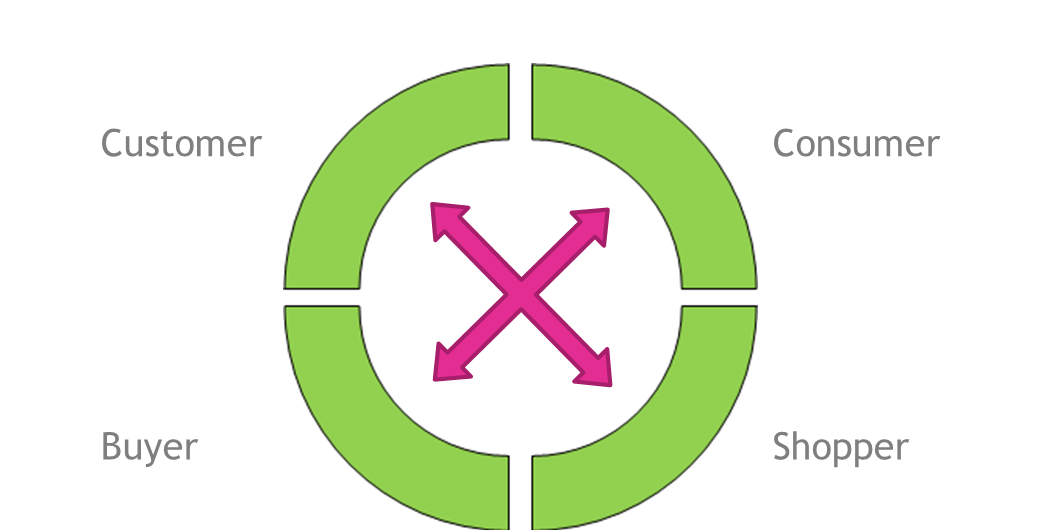7 things that you forgot CRM did

Re-introducing Karl Stone to the blog, one of our Senior CRM-Email Marketing Consultants – to give a bit of love to the much maligned CRM system.
It may have been part of your training, it’s there every day when you sit down at your desk to begin your sales calls, but actually – why are you using that odd database to track every part of your day? CRM, is often a source of much consternation among sales and marketing staff. Those of you that do think that way about your own CRMs, may just need a little nudge to remind you of why they are actually quite awesome.
1 – Managing Relationships with Customers
This may sound obvious; I mean it’s in the name, albeit as an acronym. More often than not however, organizations forget why they brought in the system in the first place. A 2013 study by Merkle Group Inc, saw that over 60% of CRM projects fail, citing the main reasons as a lack of buy-in at all levels into the importance of customer insight. This is a great example of marketers buying the hot concept and not thinking about how this will help them better connect with their customers.
It is these customers are the center of a business – there’s no question about that. Accenture cited in 2013 that, 62% of surveyed customers switched service providers due to poor customer service. Kate Legget, principal analyst at Forrester Research was recently quoted, “executives don’t decide how customer-centric their companies are — customers do.”
Takeaway: Re-align your thinking – your CRM is like a shopkeeper’s brain – it’s not just a house for points of data. It knows what you bought, when you bought it and maybe even why. In an ideal world it would also know what you browsed but did not buy as well as what you didn’t even browse – so use it to put the big ‘C’ and ‘R’ first.
2 – Building a unified contextual customer experience
Whether we’re discussing B2B or B2C, potential clients live and work over more devices than ever before. Research from Forrester saw that 56% of consumers in 2013 researched products on a mobile device from home, 36% did so in-store.
As dotdigital’s Client Services Director, Skip Fidura mentions in his talk, ‘Humane Email’, the customer ‘purchase cycle’ is no longer linear, and customers can come into contact with your brand in a number of ways online (social, email, display ads) and offline (in-store, event activation, trade shows). Consumers expect and demand a seamless experience between your brand instances.
Your CRM should not only track where your customers are interacting with your touch points, but also inform how they are (or aren’t) moving between your presences.
Takeaway: Your CRM reporting should recognize your customers’ digital body language in the form of engagement with each channel and form the core of how you are constantly updating and tailoring your user experience across all channels. Campaign tagging, the bugbear of many marketers, is a pretty vital component of this.
3 – Assisting quicker interactions with customers
The continued growth of Social is an indicator of what people demand in terms of responsiveness in communication. Customers do not want to wait for service, and sales people do not want to wait for lead volume.
Contemporary CRM platforms allow automation of communications, as well as mobile access. Automatic segmentation on the basis of browse or purchase behavior, demographic or geo-data, allows for timely and personalized comms. In addition, CRM apps can provide additional boosts to specific interactions – Orbitz’s use of Docusign for Salesforce, is a key example of streamlining vital processes.
Mobile CRMs provide sales people in the field with immediate access to customer information, past conversations and interactions are available to reference all at a swipe.
Takeaway: Look to your CRM to help you get to the point, and address your customers more efficiently – their time is more valuable than yours.
4 – Understanding your customers’ individual buying cycle
The “Real Buying Circle” from ‘Humanity in Email’ (Skip Fidura)
As we highlighted earlier, the current age of the connected consumer has made the purchase journey less straight-forward, less standardized. A customer doesn’t necessarily follow the traditional ‘needs-identification-to-research-to-purchase’ path. Their journey through your brand, and others, is the fuel to personalizing your interactions with them – it goes beyond tailored emails and responsive websites, to knowing where your customers are most likely to be at what time.
Deloitte’s 2013 poll of enterprise contact centres found that 82% view the customer experience as a key competitive differentiator. In recent years, many organizations have even gone so far as to implement the role of a Chief Customer Experience Officer.
Takeway: Build engagement through understanding, and your CRM should impart that understanding. Appreciate how and why customers move between your different brand ecosystems – email, social, instore and mobile – and what they do when they are there.
5 – Providing a framework for data discipline within an organization
Sales and marketing teams could theoretically do their jobs perfectly fine without a CRM, but in today’s multi-channel world this would inevitably lead to incompleteness. The data discipline that a CRM insists upon however, provides context and clarity to every engagement you have with your customers. Good data is the keystone for any company.
Competency levels greatly affect the quality of outputs from CRM, but also the motivation to use it. Forrester research again found that over 20% of all organizational problems with CRM stemmed from ‘people’ problems, which included change management and realigning culture.
Takeaway: Adoption starts from the top – managers need to lead and incentivize a decent standard of CRM learning and utility, but also realize that it requires a decent level of IT resources to tweak and maintain the database structure to match changing consumer patterns and technologies.
6 – Breaking down silos between organizational disciplines
If the customer is truly central to a business, then there needs to a unity in the manner in which that organization interacts with them. Unfortunately, many organizations hold data in very disparate fashions – the finance department’s records will be separate to those from sales and marketing departments, and so on. It takes a lot of work to make these different systems talk to each other with a standardized data structure, but a seamless user experience applies not just in how customers move between channels but also the different limbs of an organization.
How many poor customer experiences have involved being pushed from pillar to post, having to repeat the same conversation again and again and again? A properly developed CRM breaks down traditional communications silos by its very nature, allowing brands and businesses to become more customer-centric, through centralizing and democratizing data throughout the organization, unifying all the different customer touch points.
Takeaway: Develop a consistent data structure across all of your various systems so that you can develop a joined up message across all teams – make your customers’ journey through your organization as frictionless as possible.
7 – Delivering increased revenue
There’s a reason that businesses adopt CRM – bottom line results. Oracle suggests that CRM-attributed sales are expected to top $6.4 billion by 2015, and studies by ISM and Insight Technologies highlight a minimum 10% per annum increase in gross sales revenue per sales representative, during the first three years of system installation. As Bain cited in their 2012 study, a 5% increase in customer retention, yields profit increases of 25-100%. The revenue impact from a 10 percentage point improvement in a company’s customer experience score can translate into more than $1 billion. (The Business Impact of Customer Experience)
Takeaway: A properly implemented CRM system, with buy-in at all levels and flexibility delivers for the brand, and for the customer. A business exists because someone had an idea about a product or a service and delivered it to someone. CRM figuratively (and in some cases, literally) places the customer at the center of a business, and the decisions it can make.





